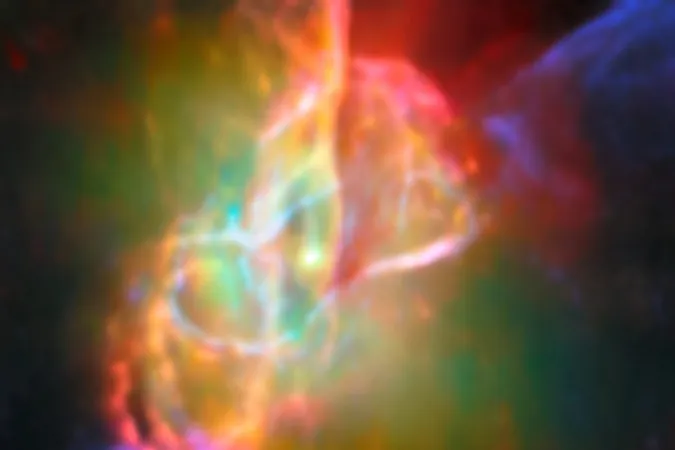
Stunning Revelation! James Webb Telescope Unveils Secrets of the Butterfly Nebula
2025-08-29
Author: Yu
A Cosmic Spectacle Unveiled
The James Webb Space Telescope has pulled back the curtain on one of the cosmos’ greatest wonders: the Butterfly Nebula. Situated 3,400 light-years away in the Scorpius constellation, this breathtaking cloud of gas and dust represents the final act of a dying star.
What Is a Planetary Nebula?
Despite their name, planetary nebulae are far from planets. These spectacular formations occur as dying star—similar to our Sun—sheds its outer layers into the vastness of space, creating some of the most visually stunning objects in the Universe. Observing these phenomena offers a glimpse into the future of our own Sun.
The Unique Shape of the Butterfly Nebula
Unlike traditional spherical planetary nebulae, the Butterfly Nebula boasts a distinct pair of 'wings,' giving it its whimsical name. Catalogued as NGC 6302, this celestial marvel emits jets of gas that shoot outward in opposite directions, sculpted by a dense ring of dust that obscures the central star from visible light.
Webb’s Infrared Powers to the Rescue
The James Webb Space Telescope utilized its Mid-Infrared Instrument (MIRI) to peer through this dust and reveal the hidden star at the center of the nebula. This star, blazing at a scorching 220,000°C (396,030°F), ranks among the hottest known central stars in any planetary nebula within our galaxy.
A Celestial Chemistry Lab
The intense radiation from the central star energizes the surrounding gases, bathing the nebula in vibrant colors. Webb’s observations uncovered the chemical makeup of the dust: crystalline silicates akin to quartz, intermingled with unexpectedly large dust grains developed over millennia. Astronomers also identified layered shells of elements like iron and nickel that are expelled in powerful jets.
A Landmark Discovery: PAHs
Among these findings were polycyclic aromatic hydrocarbons (PAHs)—carbon-based molecules commonly found in smoke and soot on Earth. Their detection in the Butterfly Nebula marks a significant milestone, as these PAHs appear to have formed from stellar winds colliding with surrounding gases. This breakthrough may provide the first evidence of PAHs emerging in an oxygen-rich nebula.
The Cosmic Cycle of Life
These revelations from the James Webb Space Telescope offer invaluable insights into how dying stars contribute to the cosmic ecosystem, enriching the galaxy with dust and complex molecules that serve as the building blocks for new stars and planets.


 Brasil (PT)
Brasil (PT)
 Canada (EN)
Canada (EN)
 Chile (ES)
Chile (ES)
 Česko (CS)
Česko (CS)
 대한민국 (KO)
대한민국 (KO)
 España (ES)
España (ES)
 France (FR)
France (FR)
 Hong Kong (EN)
Hong Kong (EN)
 Italia (IT)
Italia (IT)
 日本 (JA)
日本 (JA)
 Magyarország (HU)
Magyarország (HU)
 Norge (NO)
Norge (NO)
 Polska (PL)
Polska (PL)
 Schweiz (DE)
Schweiz (DE)
 Singapore (EN)
Singapore (EN)
 Sverige (SV)
Sverige (SV)
 Suomi (FI)
Suomi (FI)
 Türkiye (TR)
Türkiye (TR)
 الإمارات العربية المتحدة (AR)
الإمارات العربية المتحدة (AR)